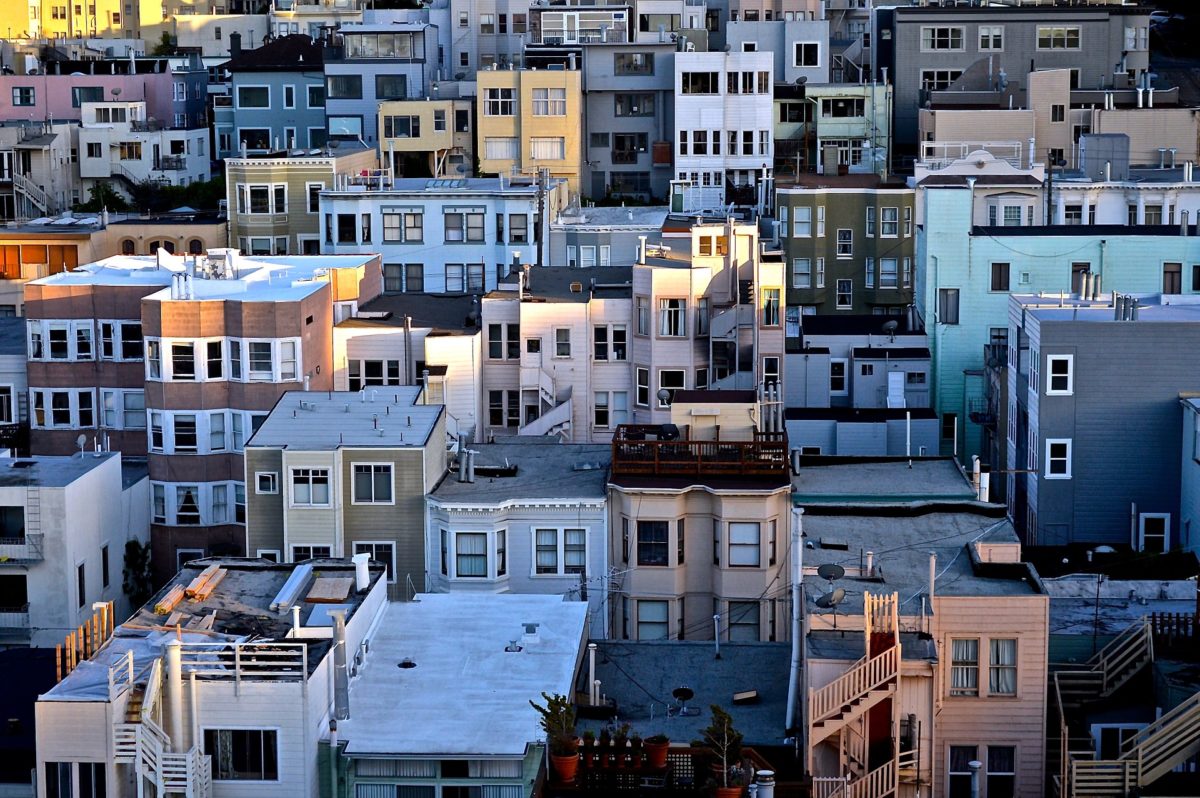
Today’s typical American home powers an impressive array of appliances, electronics, and equipment—but believe it or not, energy consumption has actually declined over the past few decades. The average household in 2015 used almost a third less energy than one in 1980, thanks to gains in energy efficiency. These gains have been driven by building codes and appliance standards that require a set minimum for energy performance.
Yet, current building codes overwhelmingly are limited to new construction, and take a long time to take effect. At the national level, building codes have stalled in the venues where model codes for homes and commercial buildings are developed: the International Code Council (ICC) and the American Society of Heating, Refrigerating and Air-Conditioning Engineers (ASHRAE). For the past six years, there has been no improvement in the model code. Code impacts are also slow to materialize: It takes about half a decade for half the states to adopt a recent model code, and buildings’ lifetimes are extremely long.
To move toward a strategy of energy optimization, where we address greenhouse gas emissions from buildings in a more comprehensive, systemic way, we need to modernize codes and standards—the fifth pivot in our new strategy.
Even if we adopted extremely aggressive building codes for new construction today, however, we could only expect those code changes to impact single digit percentages of the nation’s then-standing building stock by 2030. In fact, according to government forecasts, we should expect to see only incremental growth in the number of new U.S. households through 2030: less than 1 percent per year. Yet a large part of the country’s 140 million existing housing units are wasting energy. And that’s just the residential sector.
To meet our ICC targets, we must over-deliver in all new buildings to compensate for what we know will be a more challenging task–retrofitting our existing building stock. The good news is that it’s actually cheaper over the lifetime of a home and its appliances to build all-electric today, particularly for residential new construction, in most regions of the U.S. To encourage this, we need to push all-electric and zero codes for new buildings, and we’re starting to see cities take leadership on this front. San Jose is the most recent, and the largest, of a number of cities to commit to keeping gas out of new buildings. San Jose did so by adopting reach codes, approved by the California Energy Commission. Meanwhile, Berkeley took a different approach, using its city police powers to prohibit new gas hookups on the grounds of public health and safety.
The good news is that it’s actually cheaper over the lifetime of a home and its appliances to build all-electric today, particularly for residential new construction, in most regions of the U.S.
Most importantly, though, we must jumpstart a massive retrofit effort that addresses our lack of progress to date in existing buildings. Along with creative financing tools, progressive building performance standards (BPS) can drive this market. Among other efforts, we must support local jurisdictions in pursuing ambitious building codes that bring existing structures into focus.
Our goal is to place 10 percent of the commercial (including multi-family) building stock under deep retrofit policies by 2025, while ensuring that we incorporate strong consumer and labor protections, to avoid exacerbating existing housing crises and affordability concerns for low-income and historically disadvantaged communities. The most promising way to achieve deep retrofits with these criteria in mind are through Building Performance Standards (BPS)—which already have been adopted in Washington, D.C., New York City, and Washington state. BPSs set minimum whole-building energy performance targets based on building type and occupancy. Each jurisdiction will map its existing building fleet by type (large commercial, small commercial, types of residential, etc.), and set a minimum energy efficiency standard per category that’s no lower than the existing median performance level.
By creating standards per specific building type, BPS policies provide an opportunity to build in protections against displacement of vulnerable communities—low-income tenants and renters, for example. These protections can include limitations on what efficiency investments made in the building can be passed through to tenants in the form of rent increases.
In parallel, it’s critically important that we also ensure that low-income and vulnerable communities don’t miss out on the benefits of a BPS policy as a result of these protections, especially since energy efficiency measures historically have not reached these populations. A promising solution to this, now being implemented in New York City, is the creation of an emissions credit trading program—where buildings that exceed their building efficiency requirements can trade credits with buildings that are not in compliance, much like California’s Cap-and-Trade. With an emissions trading program, a higher value can be placed on credits for buildings that meet certain equity or social criteria, incentivizing investments in disadvantaged communities.
Another highly encouraging example of smart local policy is happening in Pennsylvania, where the state’s Housing Finance Agency has adjusted the criteria for low-income housing tax credits to favor projects that build to a passive house standard. One of the projects involved a retrofit to a school building constructed in 1897. Even better, the cost per square foot came in below that of the average multifamily project proposal.
Along with modernizing codes and boosting financing retrofits, we are proposing three other strategic pivots toward energy optimization: electrifying the built environment today, empowering customers with advanced technologies, and shifting to meter-based savings.
As we mentioned, it’s crucial to ensure everyone benefits as we transform our building stock and the energy systems that feed it, including environmental and social justice communities.